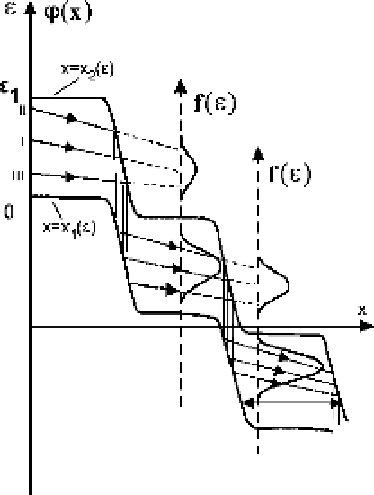Environmental Engineering Reference
In-Depth Information
excitation energy, these electrons are stopped, and their density increases in a cor-
responding point of space (see Figure 5.16). Then the voltage distribution in space
has the form of a “Tsendin staircase”, as shown in Figure 5.17 [89, 117]. Moreover,
Figure 5.17 shows the bunching of the electron flux in this case. Indeed, each elec-
tron that partakes in excitation loses an identical amount of energy, and for these
electrons in this approximation the electron energy distribution function is con-
served on the following striation. If we take into account the energy loss in elastic
electron-atom collisions, fast electrons lose more high energy than slow ones. As a
result, the electron energy distribution function becomes narrower, and bunching
of electrons takes place. Within the framework of this description, one can expect
formation of striations in the case when two regimes of the plasma state, with stri-
ations and for the uniform plasma distribution, may be realized. Then one can
consider a plasma with striations as an energetically profitable plasma state [103],
that is, in this plasma state the total voltage of this plasma is optimal.
Seemingly, the Tsendin model, which is based on a stronger braking of fast
electrons compared with slow ones, allows us to explain the nature of striation
formation. Indeed, the electron velocity distribution function is narrow owing to
bunching of the electron beam and is not broadened after passage of many striation
periods. Then the energy
Z
λ
eE
(
x
)
dx
D
Δ
ε
(5.171)
0
Figure 5.17
Tsendin staircase - the form of the plasma potential in striation formation and the
character of bunching [89, 117].

